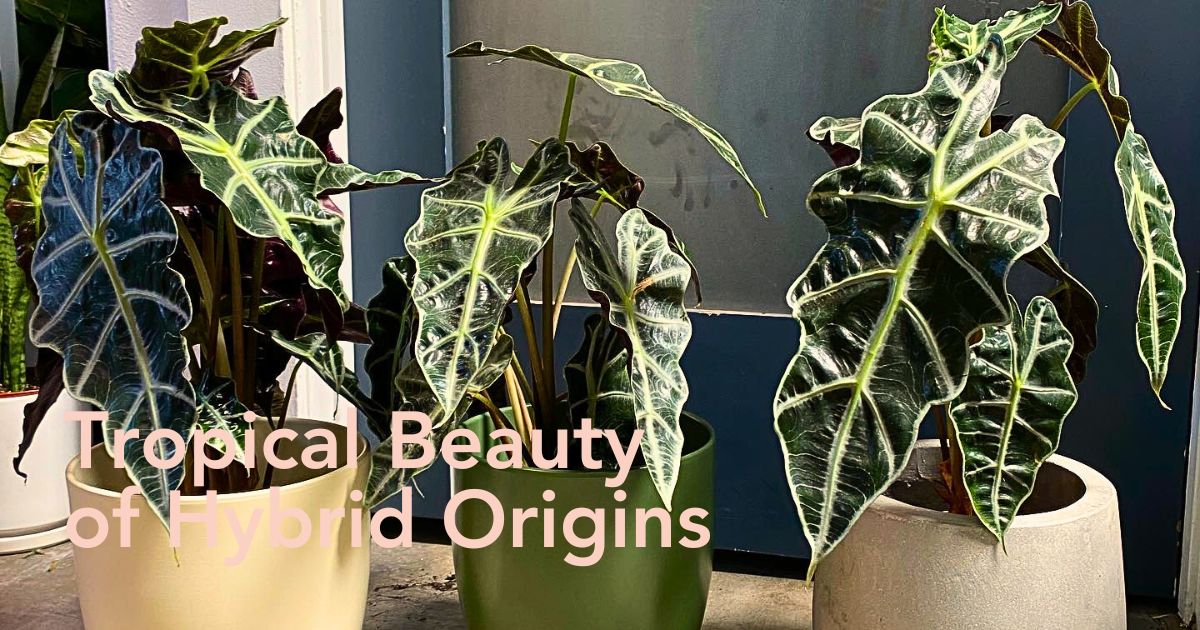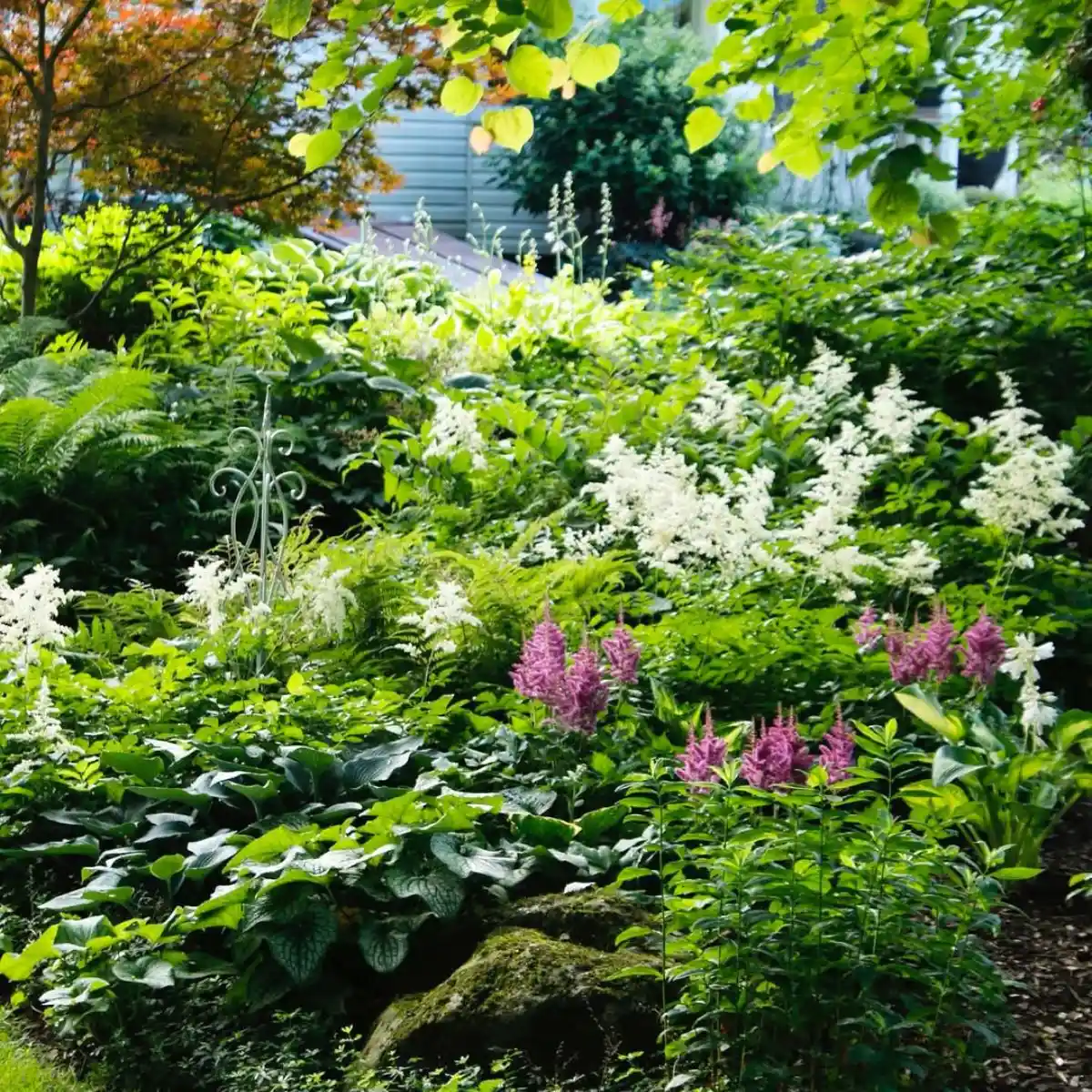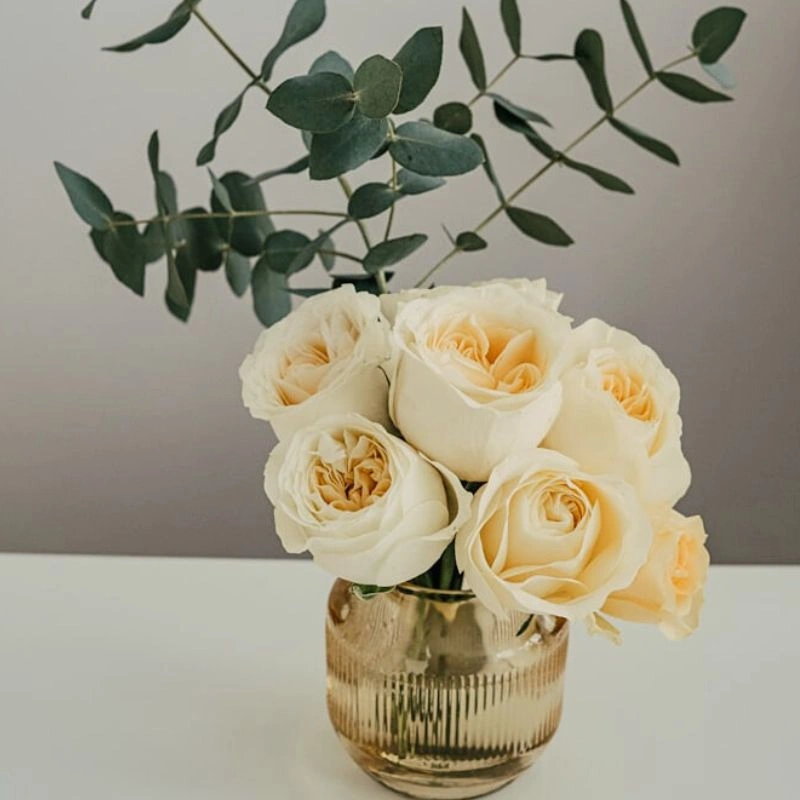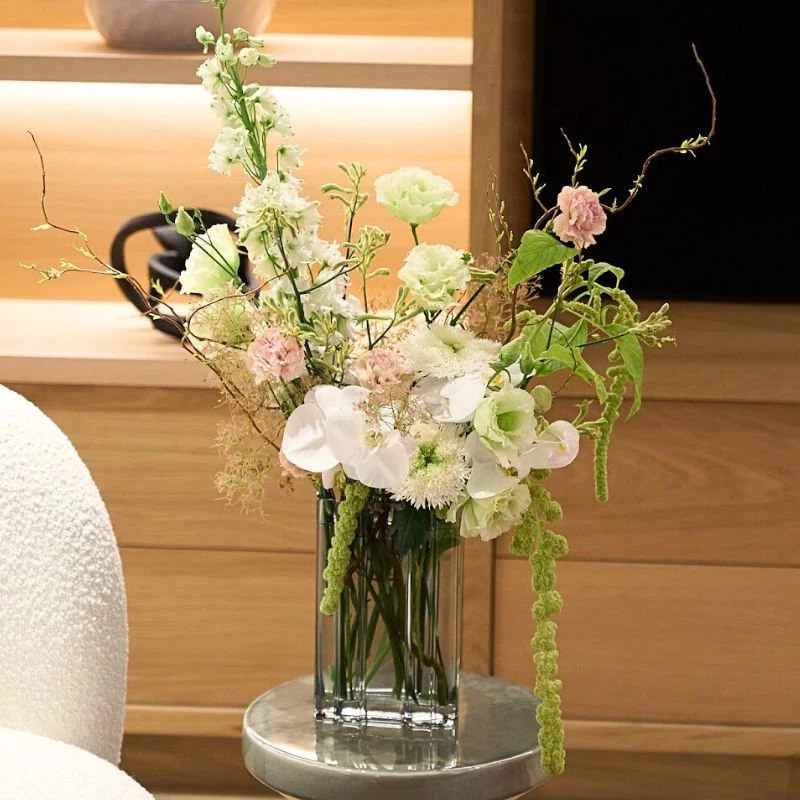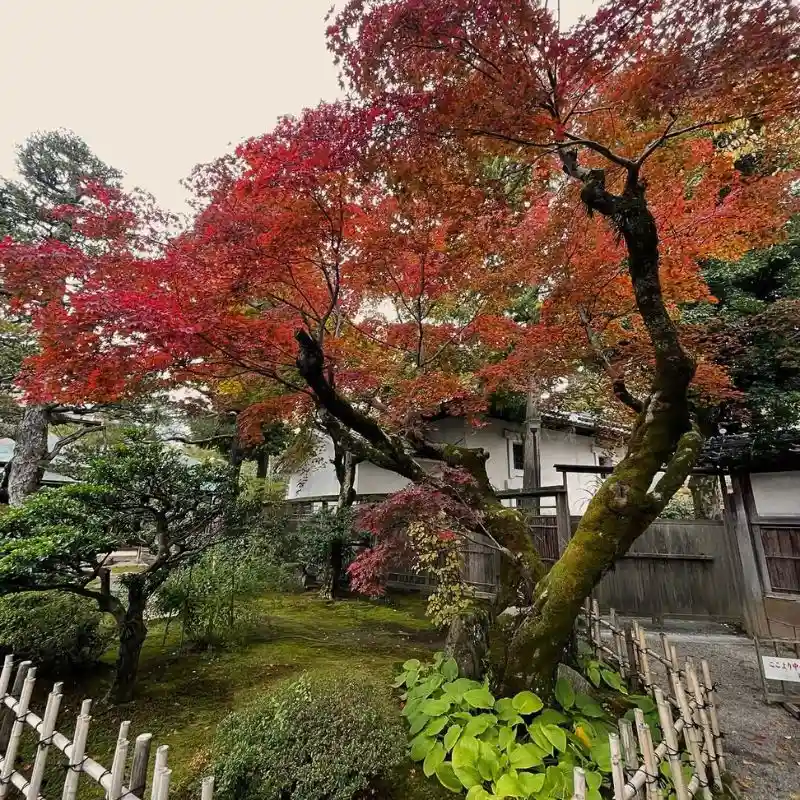The Alocasia amazonica plant, often commonly known as the African mask plant, Amazonian elephant ear, or Polly Alocasia, is one of the most visually arresting houseplants you’d find when you think of tropical plants. Bearing glossy, arrowhead-shaped leaves etched with stark white veins, this houseplant, practically, looks like something plucked right out of an extraterrestrial rainforest.
But behind the African mask plant’s striking appearance lies a tangled story of a horticultural puzzle, hybrid origins, and a name that’s geographically, quite, ambiguous. There is, definitely, a lot that you do not know about this houseplant. Questions like ‘How big do Alocasia amazonica grow?’ or ‘How to care for the Alocasia amazonica’, are common among both seasoned gardeners and curious newbies. You’d be surprised, therefore, that this Amazonica alocasia has a lot that intrigues.
Alocasia Amazonica Plant Origins and Native Habitat - A Case of Mistaken Identity?
The Alocasia amazonica plant (Alocasia × amazonica) is a botanical marvel. It fascinates, attracts curiosity, and captivates in equal measure with its debatable ancestry, the dramatic foliage that it possesses, and the air of tropical flair and elegance that it radiates.
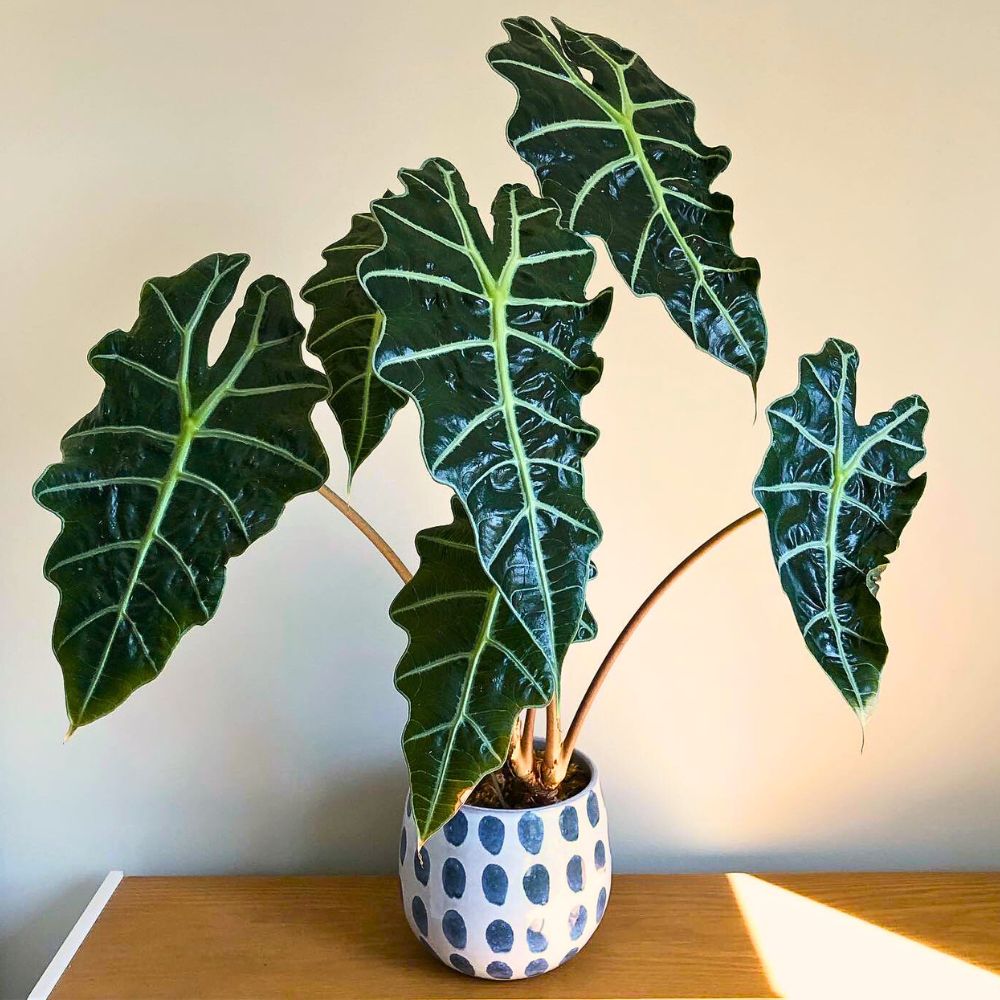
Contrary to what its name suggests, this plant has no ties to the Amazon rainforest—a fascinating paradox that adds to its allure. The confusion stems from its hybrid origins. Botanical records reveal that this plant is not quite a wild species but a cultivated crossbreed likely created in the 1950s by Salvadore Mauro, a nursery owner in Miami, Florida, at his Amazon Nursery.
Experts speculate that Salvadore likely crossed Alocasia sanderiana, which is native to the Philippines, and Alocasia longiloba Watsoniana, which is native to Southeast Asia. He named the resultant cross-bred variety after his Amazon Nursery. This explains the ‘Amazonica’ misnomer, which has generated quite some confusion over the years—he left its parentage debated because he did not formally register the hybrid.
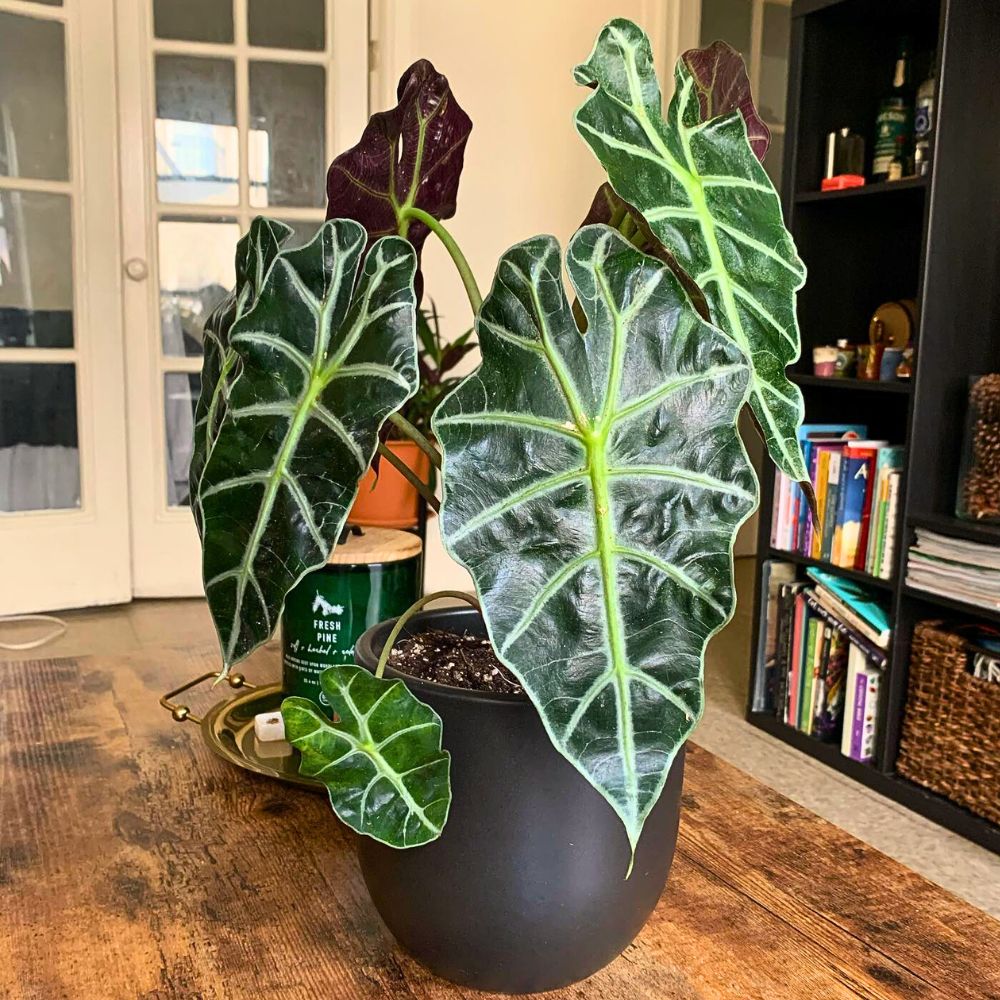
Is Alocasia Amazonica, Therefore, a Plant Without a Wild Home?
Unlike its wild-growing relatives, the Alocasia amazonica plant has never, quite, been found, as you would expect, growing in natural rainforests. It exists solely as a cultivated hybrid, thriving in controlled environments that mimic the humid, shaded understories of Asian tropics. Its popularity soared in the 20th century, earning it nicknames like African mask plant due to its sculptural leaf patterns resembling tribal art.
True Alocasia species hail from Southeast Asia’s tropical rainforests, thriving beneath dense canopies where humidity is high and light is dappled. However, on its part, the Alocasia amazonica’s dramatic foliage, which evolved to capture fleeting sunlight, explains its preference for bright, indirect light, a trait critical to its care indoors.
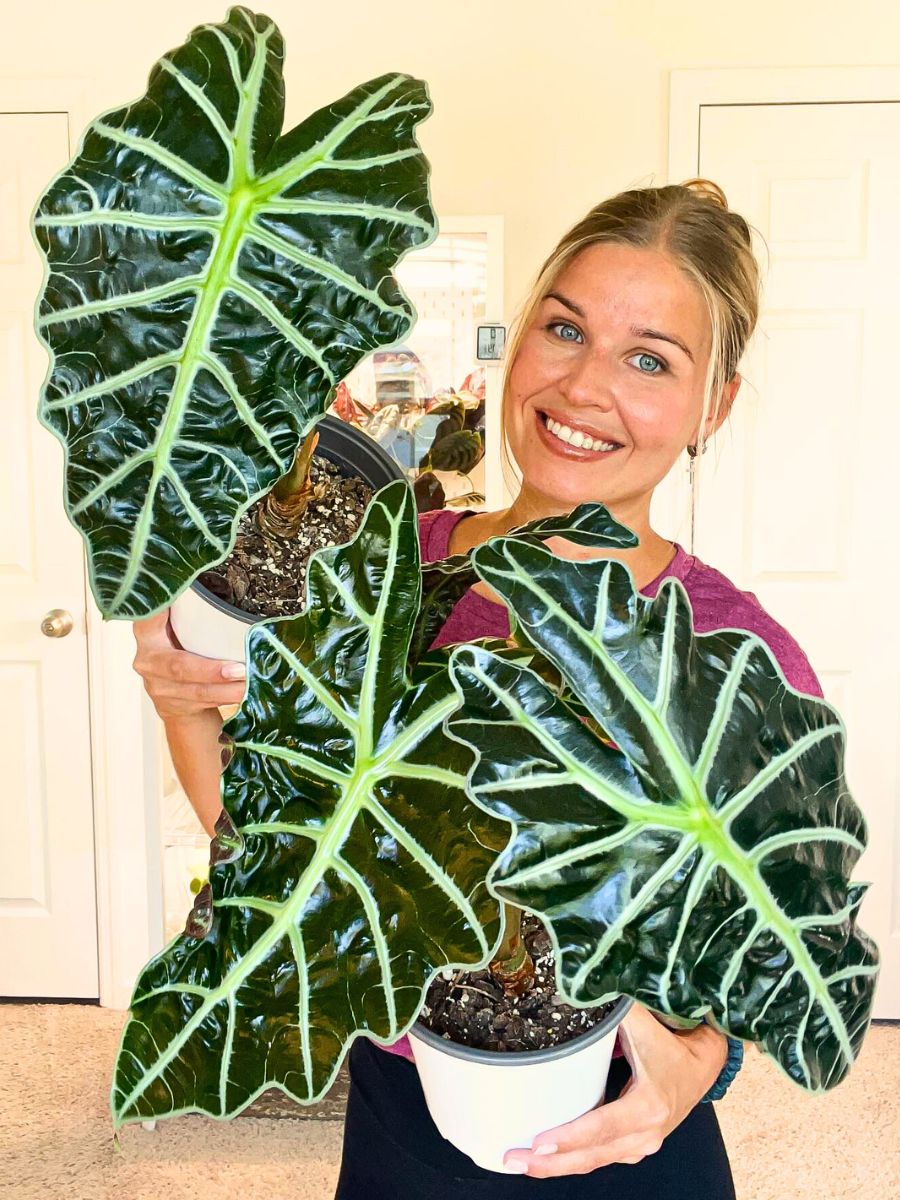
Alocasia Amazonica Plant’s Botanical Profile
The Alocasia amazonica plant is a rhizomatous perennial that grows up to two feet tall and wide in containers. Its leathery, dark green leaves—reminiscent of an elephant’s ear—are punctuated by silvery-white veins that glow when backlit. The ‘Polly’ cultivar (Alocasia amazonica Polly) is a dense version with wavy leaf edges.
Rarer varieties like the Alocasia amazonica variegated feature creamy-white splashes, though these are harder to find. Each leaf emerges from a central rhizome, unfurling like a scroll, while its inflorescence—a green-and-white spathe—is often hidden beneath the foliage.
The Amazonica Alocasia is renowned for its arrowhead-shaped leaves, which grow up to 18 inches long and 14 inches wide. The glossy, dark green leaves etched with silvery-white veins create a stark contrast resembling brushed metal. Underneath, the leaves blush a deep purple, adding a hidden layer of drama to the plant.
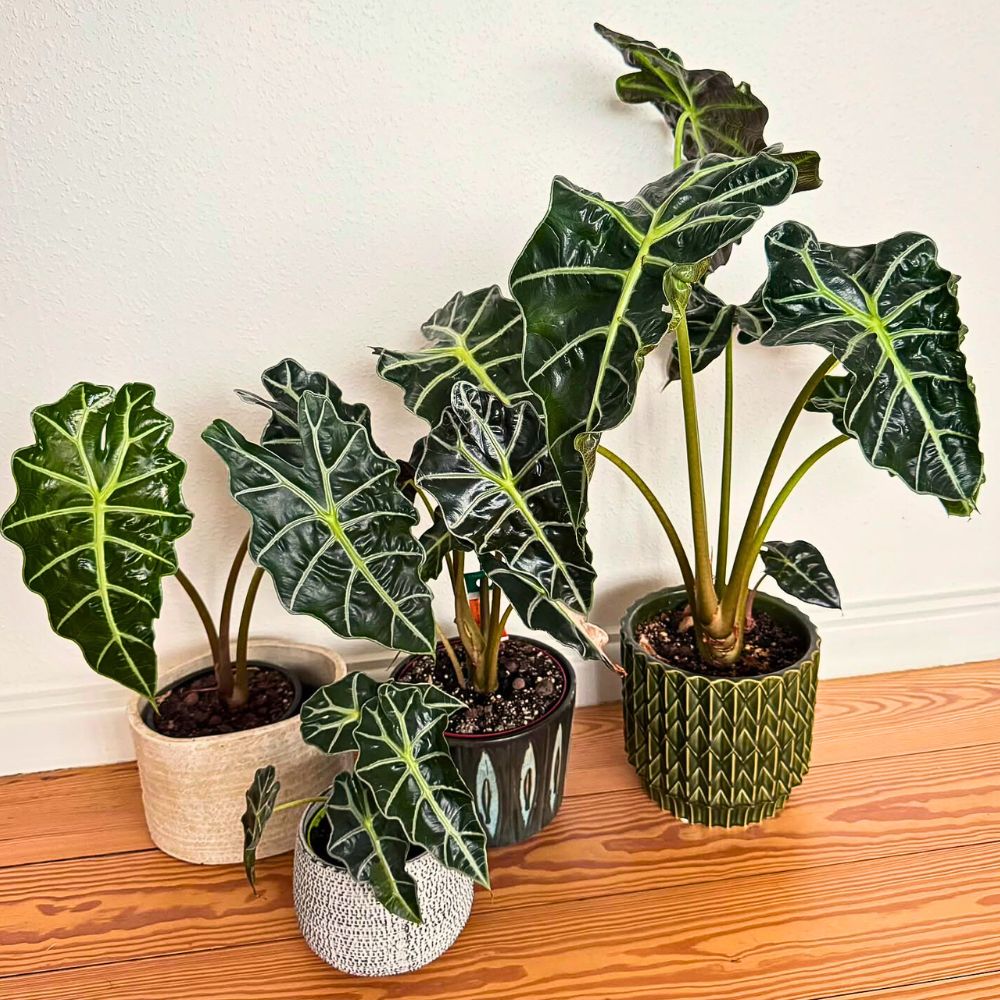
A compact cousin, the Alocasia amazonica Polly (or Polly Alocasia), is a dwarf mutant of the Alocasia amazonica, discovered in Florida, and shares the same care needs but stays smaller, making it perfect for tight spaces, and also tabletops.
Alocasia Amazonica’s Variegated Rarities
While rare, variegated forms of the Alocasia amazonica exist, featuring splashes of other colors. These mutations are highly sought after by collectors, though they require even more care to maintain their striking variegations and patterns. Variegation in Alocasia amazonica variegated plants arises from a genetic mutation that disrupts chlorophyll production in certain leaf cells. This creates patches of white, yellow, or pink tissue—a phenomenon that is unstable and notoriously difficult to propagate reliably.
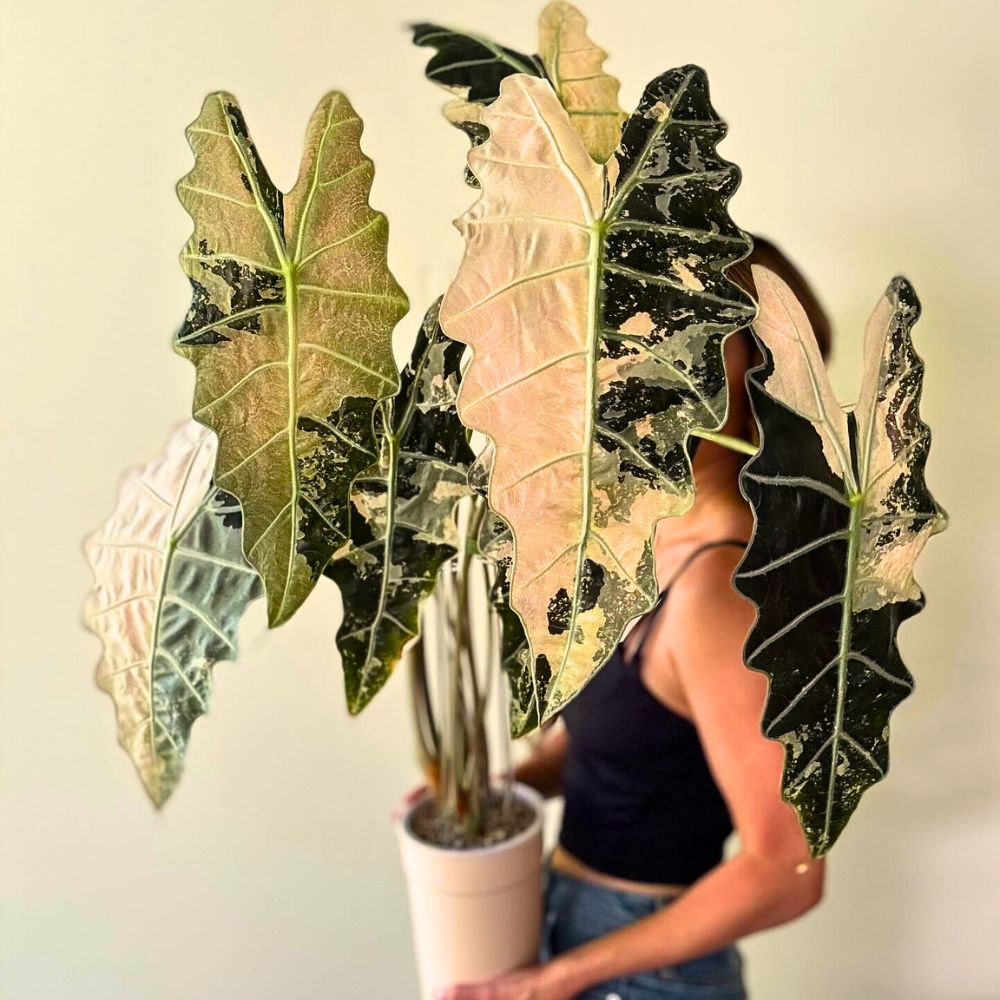
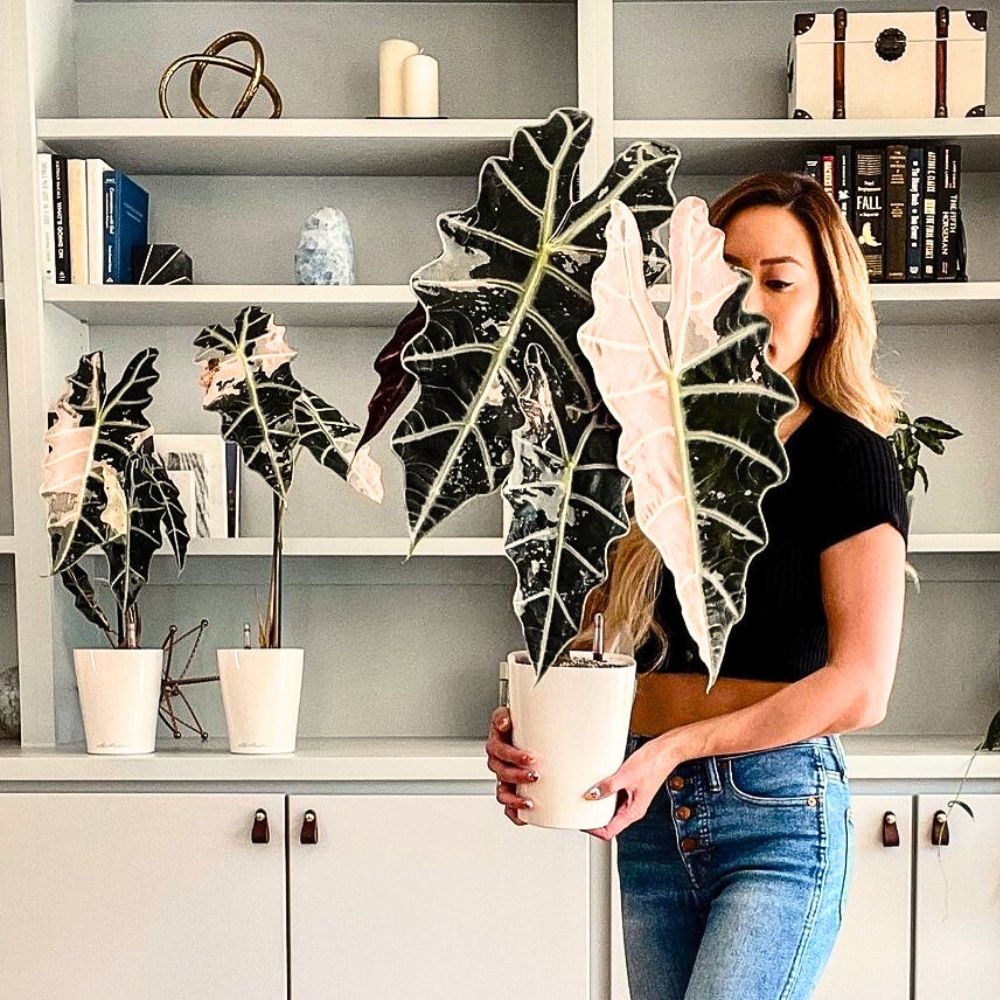
The coveted Alocasia amazonica Polly cultivar, for instance, maintains its compact size while exhibiting creamy-white veins against emerald leaves. Recent years have seen the emergence of even more exotic varieties, like the Alocasia amazonica Pink Albo variegated, which flaunts marbled pink-and-white patterns believed to stem from spontaneous mutations in tissue culture. These rarities often sell out within minutes of nursery restocks, with prices reaching hundreds of dollars per plant.
Why the Hype? Significance of the Alocasia Amazonica Variegata Craze
The Alocasia amazonica variegata’s rise and craze mirrors a broader trend toward ‘statement foliage’ in urban gardening. Though difficult to maintain, the plant’s somewhat low-maintenance needs compared to finicky varieties like orchids, as well as the instant visual payoff make it a favorite among younger plant parents. Variegated specimens, though pricey, are often coveted, fueling a collector’s market.
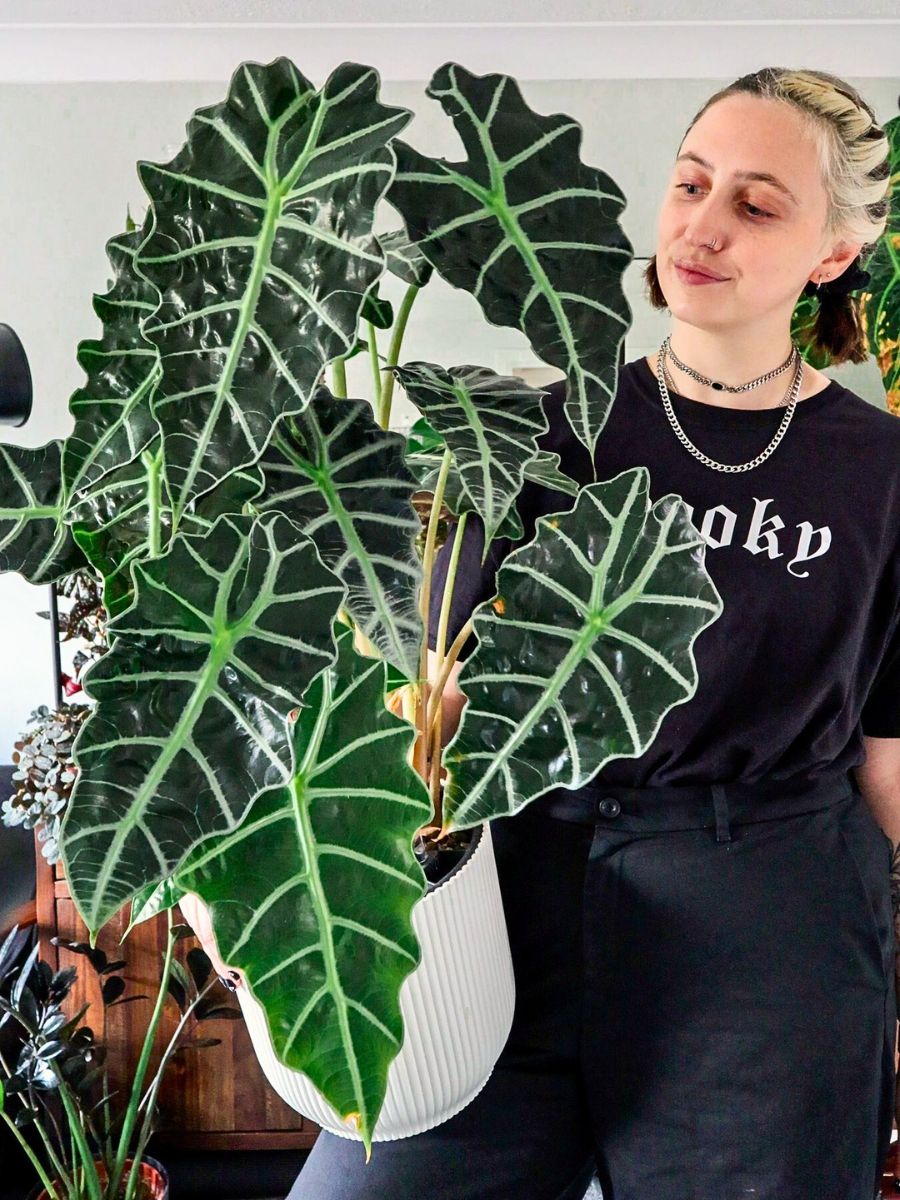
Alocasia Amazonica Cultivation and Care
With its arresting foliage and tropical charm, the Alocasia amazonica plant remains a favorite among houseplant enthusiasts. However, its dramatic appearance comes with specific care demands. Cultivating and nurturing the compact Alocasia amazonica Polly or the rare Alocasia amazonica Variegata, therefore, requires quite a lot of attention.
Lighting Needs for Alocasia Amazonica
Amazonica Alocasia lighting preferences are specific: bright, indirect light is key. Direct sun scorches its leaves, while low light dulls their vibrancy and causes leggy growth. For the plant’s optimal health, aim for at least 400 foot-candles of light intensity. Also, rotate the plant weekly to ensure even exposure. An east or west-facing windows with sheer curtains strike the perfect balance for its ideal growth.


Water and Humidity Should Mimic the Tropics for This Alocasia Plant
As a rainforest-oriented plant, the Alocasia amazonica craves humidity of between 60% and 80%. Whenever required, use pebble trays, humidifiers, or frequent misting to replicate its parent plants’ tropical home’s native environment. Water when the top inch of soil dries out, but avoid soggy conditions because root rot is a silent killer. Therefore, keep the soil consistently moist but not sodden. Ideally, water deeply in the morning, allowing excess to drain, and reduce the watering frequency in the winter.
Soil and Fertilizer Feeding for Alocasia x amazonica
A well-draining mix of peat, perlite, and orchid bark ensures the plant’s healthy roots. Feed it monthly with a balanced liquid fertilizer or water-soluble fertilizer, which is diluted to half strength to avoid leaf burn. Alocasia amazonica should be well-fed during spring and summer but pause in winter when its growth slows down.
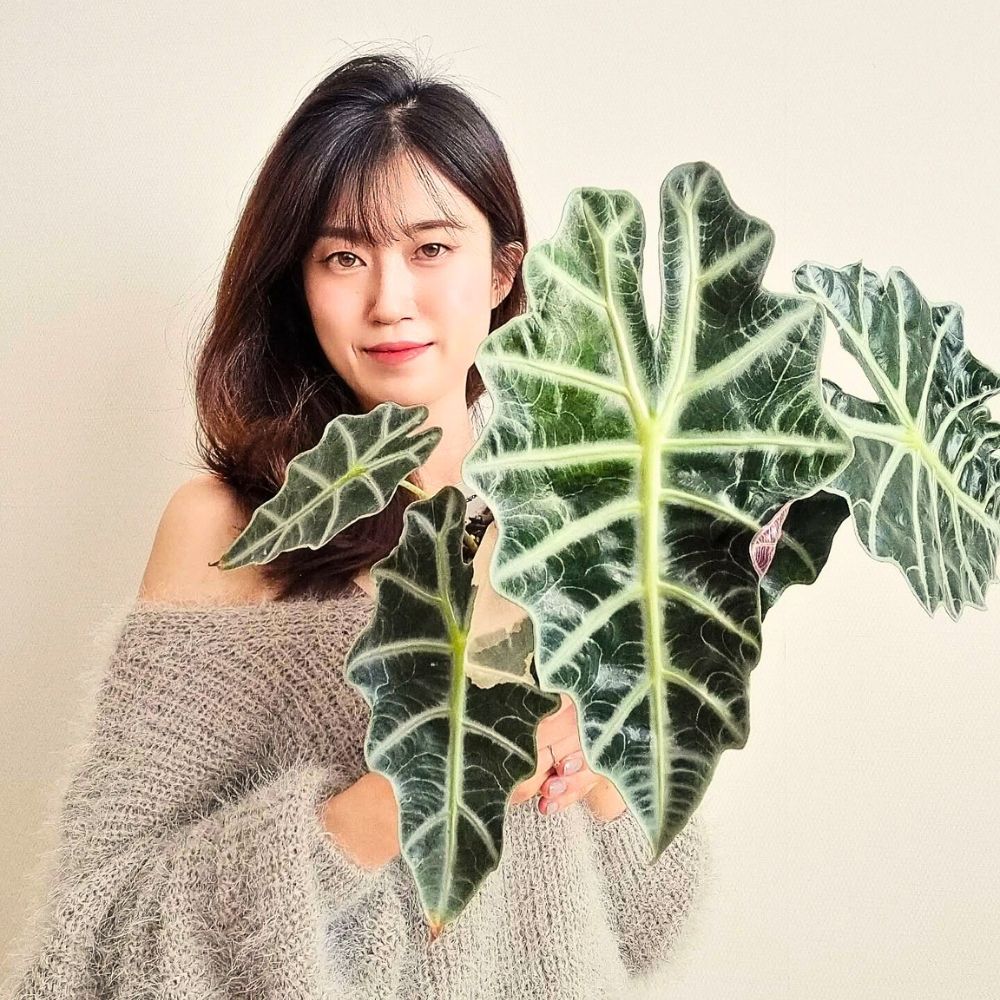
Temperature Requirements for Alocasia Amazonica
For ideal growth, the Alocasia amazonica prefers temperatures between 15°C to 27°C. Maintaining this range helps the plant flourish, promoting vibrant foliage and robust growth. Always try to keep the temperature above 10°C to 13°C. Falling below this threshold can lead to dormancy and yellowing leaves. A safer minimum is around 15°C to prevent stress and potential damage. While the plant enjoys warmth, temperatures exceeding 29°C can also stress it, leading to drooping or wilting leaves.
Also, the Alocasia amazonica plant is sensitive to sudden temperature changes. Exposure to cold drafts from windows, doors, or air conditioning units can cause significant stress, resulting in leaf discoloration and even halted growth. One should, therefore, avoid placing the plant near heating vents or air conditioners, use thermostats, if possible, to maintain a stable environment, and monitor temperatures regularly, especially during seasonal changes.

Growth Habits of This Alocasia
When asked, how big does the Alocasia amazonica grow? The answer varies. Indoors, it typically reaches 30-70 cm (1–2 feet) tall, but in optimal conditions outdoors, it can stretch to 1 meter (3 feet). Its rhizomatous roots are capable of supporting a bushy, upright growth habit.
How to Propagate Alocasia Amazonica
Propagating the Alocasia amazonica plant is not as difficult as one may, perhaps, think. This tropical beauty can be propagated through several methods, primarily focusing on division and offsets.
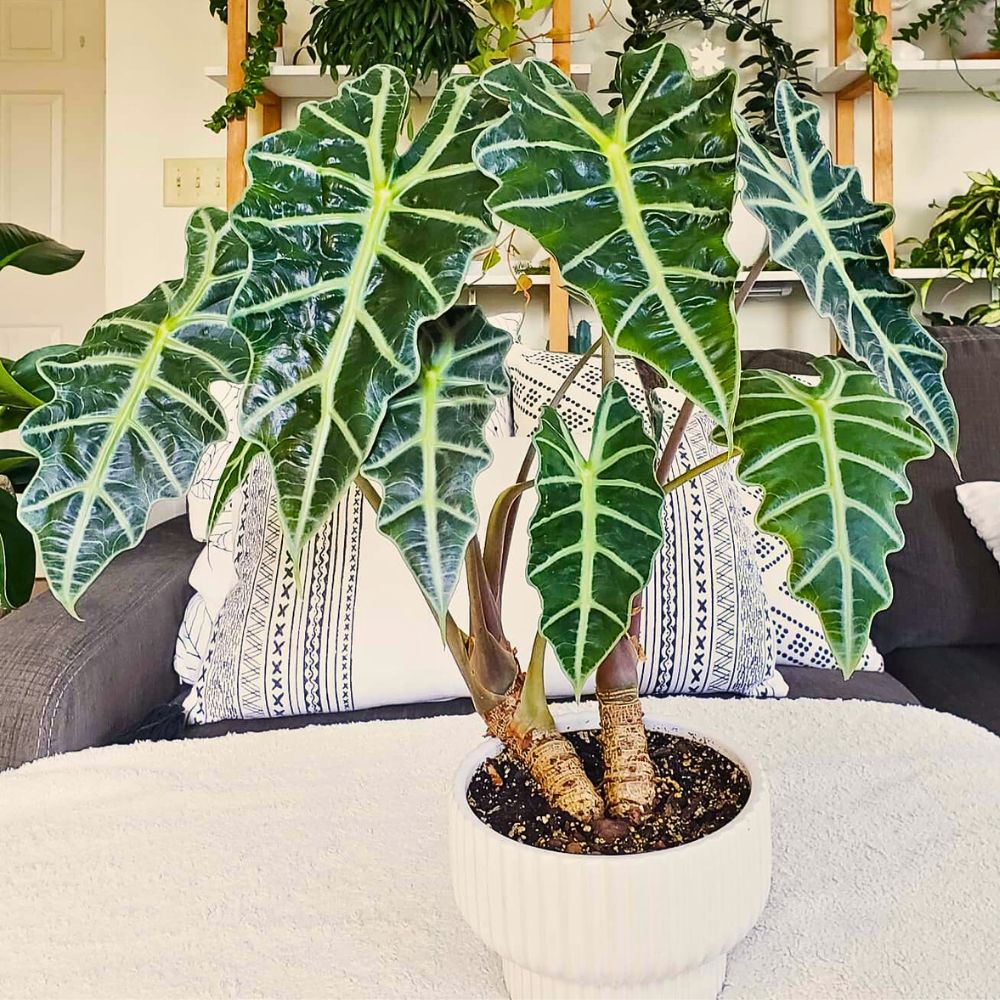
Propagate Alocasia Amazonica - Propagation by Division
- Select a healthy parent plant. Choose a mature Alocasia amazonica that has multiple stems or rhizomes.
- Carefully take the plant out of its pot, gently shaking off excess soil to expose the root system.
- Identify clumps of stems and roots and use a clean, sharp knife to divide the root ball into sections, ensuring each division has at least one growth point or bud.
- Place each division in its own pot filled with well-draining potting mix. Water it thoroughly and keep it in a warm location with bright, indirect light to encourage recovery and growth.
Propagate Alocasia Amazonica - Propagation by Offsets
- Identify offsets, looking for small bulbs or offsets around the base of the parent plant. These are smaller plants that can be separated and grown on their own.
- Using a clean knife, carefully cut the offsets away from the main plant, ensuring they have some roots attached.
- Pot each offset in a suitable potting mix, water well, and place them in a bright spot away from direct sunlight.
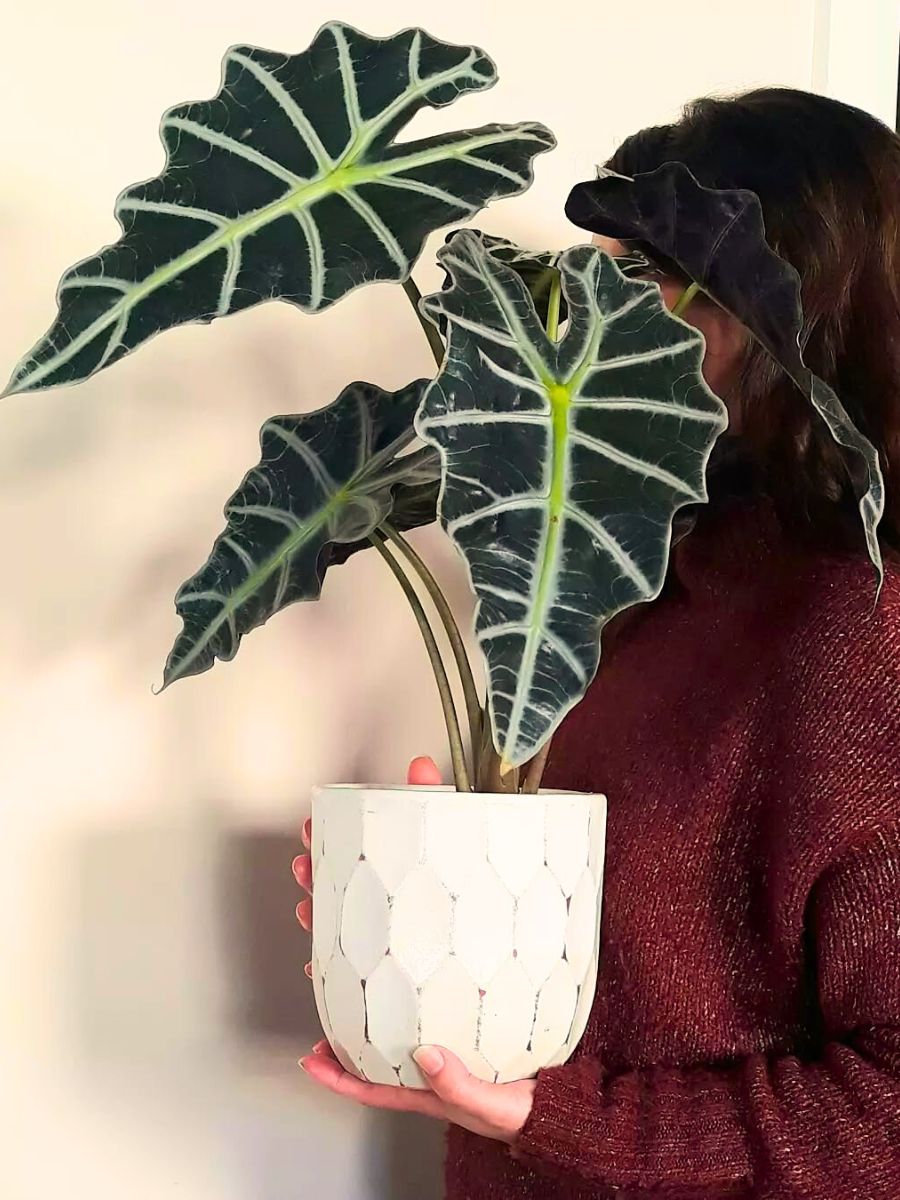
Propagate Alocasia Amazonica - Water Propagation (for Tubers)
If you have a young tuber with no strong root system, consider water propagation.
- Remove the tuber from the soil and clean it of any dirt.
- Submerge the tuber in a container of water, ensuring that only the roots are submerged.
- Place the container in bright, indirect light, and change the water regularly to prevent algae growth. Once roots develop, transfer it to soil.
Alocasia Amazonica Plant Care After Propagation
After propagating the Amazonica Alocasia plant, maintain high humidity levels (around 60-80%) and temperatures between 18°C to 27°C to support new growth. Keep the soil consistently moist but not soggy as overwatering can lead to root rot, especially in newly propagated plants. Also, ensure that your newly propagated plants receive bright but indirect light to promote healthy growth without burning the leaves.
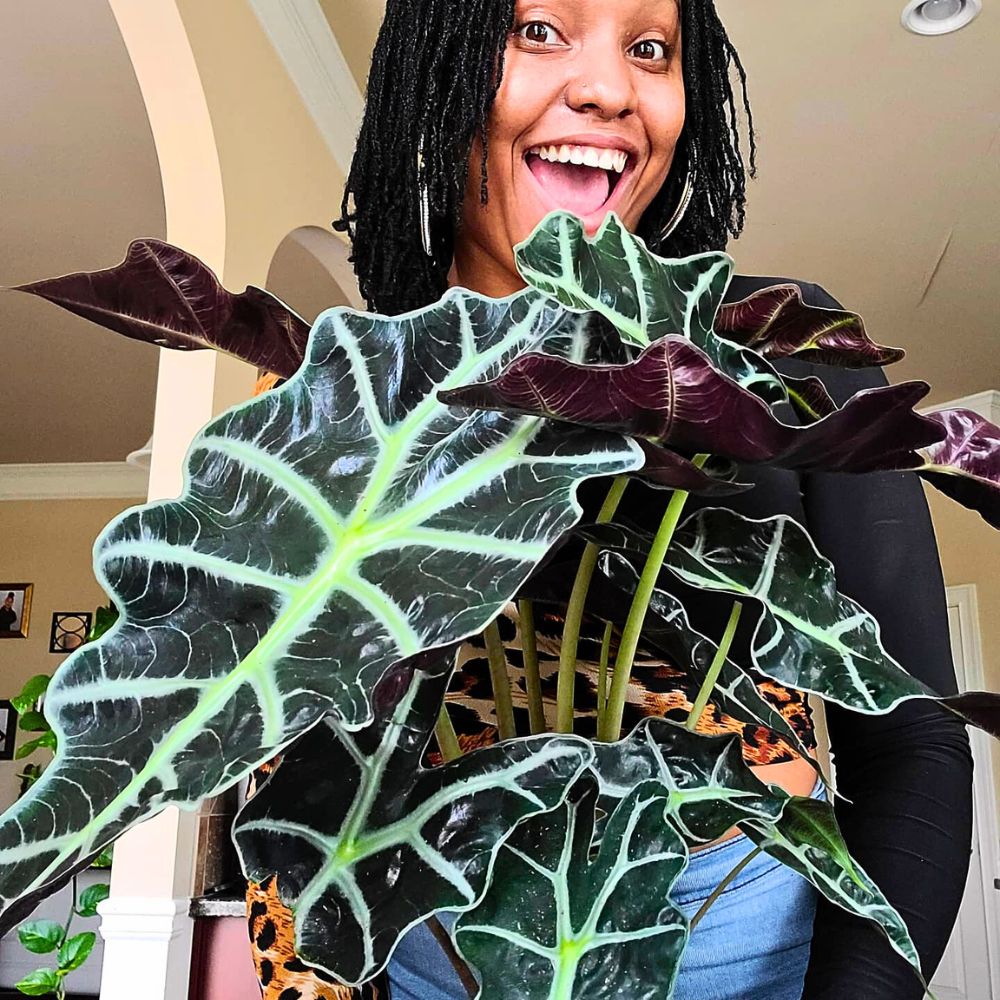

Alocasia Amazonica Plant’s Design Impact
The Alocasia amazonica plant is a unique design element. Its sculptural leaves pair effortlessly with design styles such as minimalist interiors, whereby a single plant adds drama to monochromatic spaces. It, also, shines as a statement piece in these minimalist designs, as well as in jungle-themed spaces. Alocasia amazonica is also, handy in bohemian setups, where it can be paired with rattan furniture or macramé hangers for an amazing bohemian vibe. Still, in this design concept, it can also be grouped with ferns and pothos, to create enhanced lush, layered looks.
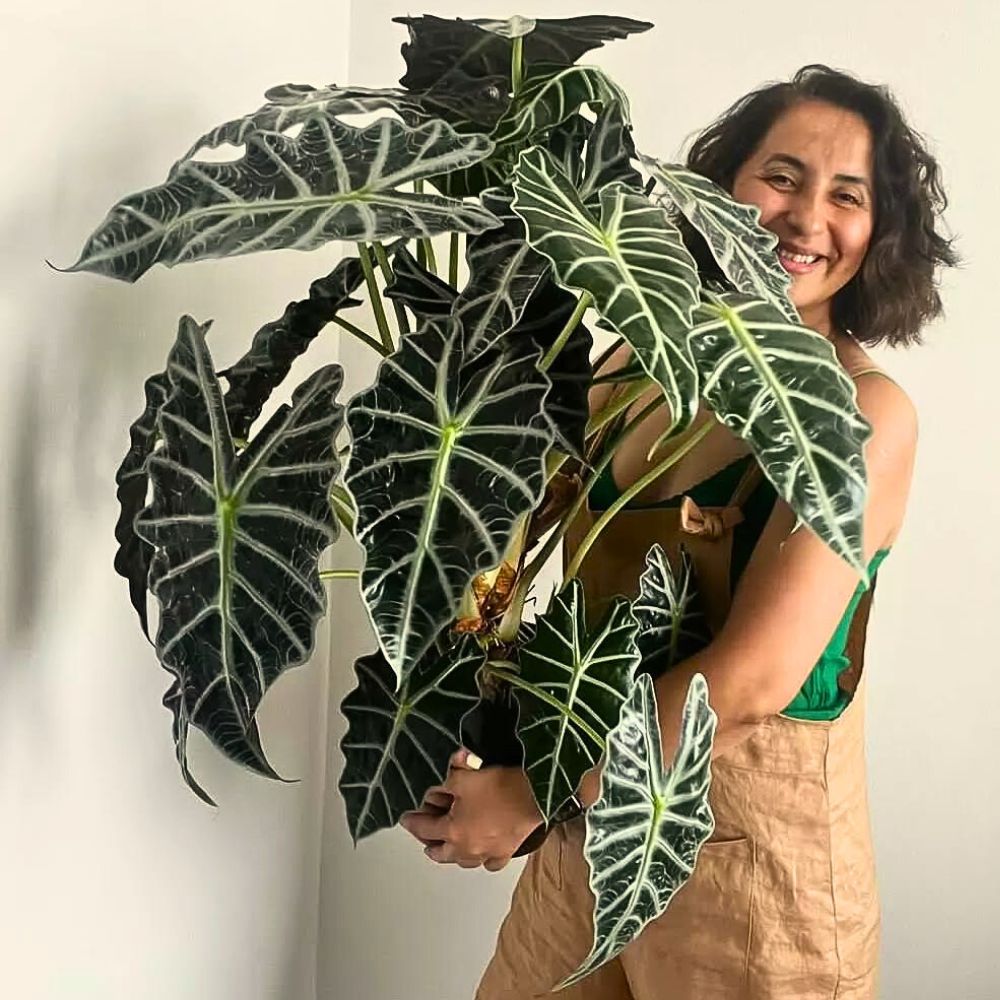
Moreover, this plant can, also, be used in modern offices, where particularly the compact Polly Alocasia thrives under LED grow lights; purifying air while boosting productivity. Studies, after all, suggest different houseplants, including Alocasia species filter airborne toxins. The Alocasia amazonica plant’s transpiration, similarly, improves indoor humidity—a bonus in dry climates—which makes occupants of these spaces comfortable and energized. And, in feng shui, the Alocasia amazonica plant’s upward-growing leaves symbolize growth and positivity, which makes it ideal for this design idea. However, the plant should be handled with care: all parts of the plant are toxic and if ingested, pose risks to pets and children.
Feature image by @nareunhan_green, header image by @thepottedearthco.

